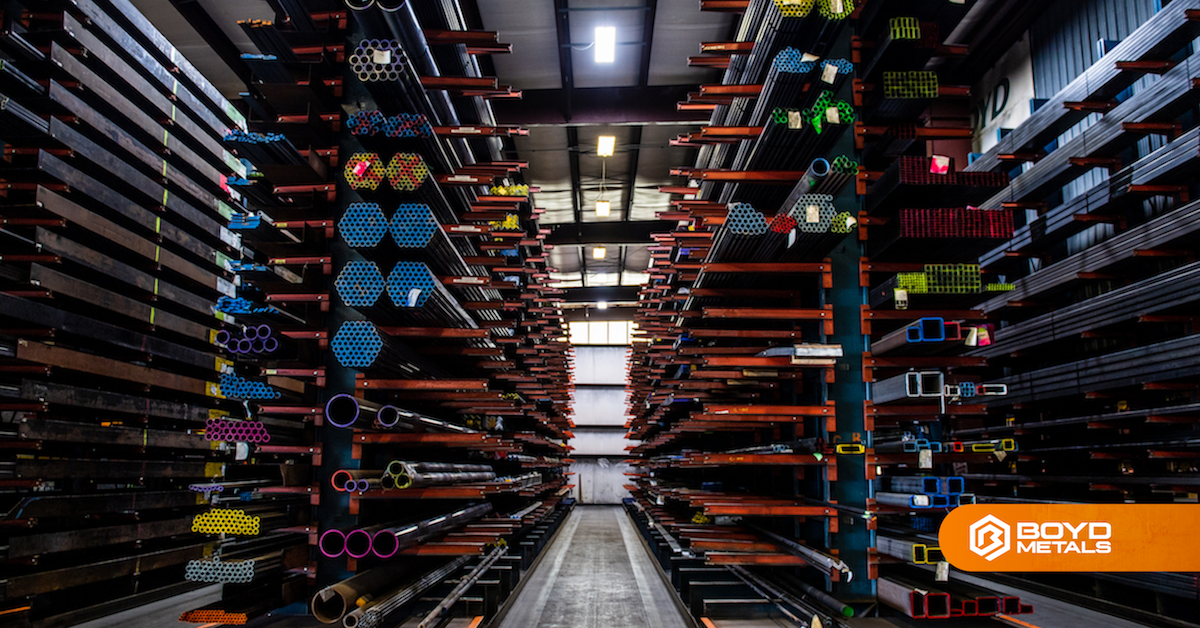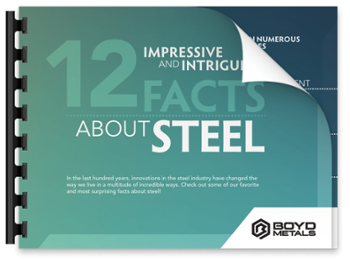If you don't know the difference between carbon and stainless steel, you're not alone. In fact, it's one of the most common questions we receive as a full-service metal supplier. To help, we decided to break down some key facts about each type of steel, providing tips on how to tell the difference between them and when you should use one over the other.
Facts about Carbon Steel
Carbon steel is one of the most utilized commercial metals in the world. As an alloy of iron and carbon, this type of steel has a higher concentration of carbon than other types, making it stronger and highly effective for applications where strength is needed.
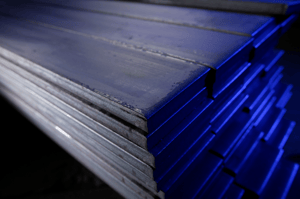 Carbon steels are rated and categorized by their carbon content. Each type is measured by its total carbon percentage and classified into one of the following categories:
Carbon steels are rated and categorized by their carbon content. Each type is measured by its total carbon percentage and classified into one of the following categories:
Low Carbon Steel: < 0.25% (Example: AISI 304)
Medium Carbon Steel: 0.25% - 0.60% (Example: AISI 409)
High Carbon Steel: 0.60% - 1.25% (Example: AISI 440C)
These categories not only help break down the steel's physical properties but also help steel manufacturers determine the best uses and applications for each kind.
Low Carbon steels are the least expensive, with low hardness, high ductility, toughness, machinability, and weldability. This makes them good for car parts, structural shapes such as I-beams, and other construction components.
Medium Carbon steels have medium strength, ductility, and toughness, making them better resistant to wear and tear. These steels are commonly used for shafts, axles, gears, couplings, and railway components such as train tracks and wheels.
High Carbon steels have high hardness and strength, but low ductility making them unfavorable for welding purposes. As a result of their high wear resistance, these steels are often used in cutting tools, high-strength wires, and dies.
One thing all carbon steels have in common though is that they do not do well in temperatures below 32 degrees Fahrenheit and are more prone to rust and corrosion. In subfreezing temperatures, carbon steels start losing their flexibility and may even crack if they are exposed too long.
Carbon steel can be produced in a mill from recycled steel, virgin steel, or a combination of both, and is available in a variety of different finishes such as galvanized, hot-rolled, or cold-rolled.
Facts about Stainless Steel
Like carbon steel, stainless steel is also a metal alloy and is widely used throughout the world. Stainless steels are primarily used for their corrosion resistance.
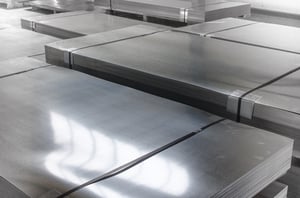
Consisting of chromium and iron, stainless steel is used to make a long list of products, including food-grade and pharmaceutical tanks, surgical instruments, wire, sinks, patio furniture, water tubing, and cable trays.
The percentage of chromium added to the iron will vary between 10 and 35% and changes based on the grade of stainless steel being produced. Chromium oxide provides a protective layer to stainless steel and prevents rusting and corrosion. In contrast to non-chromium oxide protective coverings that eventually begin dissolving, chromium remains prevalent throughout the steel.
Nickel, titanium, and other elements can be added to stainless steel to improve certain qualities of the steel as well. In fact, there are hundreds of different stainless steel alloys available. These alloys can generally be divided into three broad categories:
- Austenitic Stainless Steel
- Ferritic Stainless Steel
- Martensitic Stainless Steel
Austenitic stainless steels are mostly comprised of common stainless steel alloys and usually have a higher chromium content. These alloys include Grade 304 and Grade 316 steels, which have higher corrosion resistance and tensile strengths.
Ferritic stainless steels are known for their magnetization and are often less expensive because of their reduced nickel content. These alloys include Grade 430 and Grade 434 steels, which are slightly less strong than austenitic stainless steels but have good pitting resistance.
Martensitic stainless steels are by far the least common category of stainless steel and tend to have lower corrosion resistance. These alloys include Grade 410 and 420, which have a higher hardness and are ideal for applications requiring extraordinarily high tensile strength and impact resistance.
While stainless steel is more expensive than mild steel upfront, its increased service life often makes the larger upfront costs well worth it in the long run.
How to Tell the Difference Between Carbon Steel and Stainless Steel
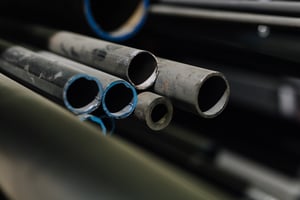 Visual differences between carbon steel and stainless steel involve surface finish and how the two metals reflect light. For example, stainless steel is more burnished and lustrous than carbon steel. Carbon steel, on the other hand, has a more dull, matte finish.
Visual differences between carbon steel and stainless steel involve surface finish and how the two metals reflect light. For example, stainless steel is more burnished and lustrous than carbon steel. Carbon steel, on the other hand, has a more dull, matte finish.
Another common way to tell the difference is to check to see if there are any signs of oxidation (red rust). Carbon steels often contain a high amount of carbon and are susceptible to rusting when exposed to moisture, while stainless steels do not rust.
If you are in a real pinch and not sure how to tell the difference, place one or two drops of lemon juice on the steel and leave it to sit for a while. If the lemon juice produces a black spot, then chances are it is most likely carbon steel.
When to Use Carbon Steel Versus Stainless Steel
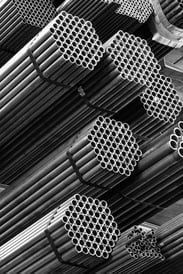
Carbon steel and stainless steel both have their advantages and disadvantages—the important part is being able to match the steel to the application requirements.
When it comes to fabrication, both carbon and stainless steel are relatively easy to manage. They both harden to construct durable products, can be machined without cracking or chipping, and welded to established strong joints.
Again, when it comes to choosing one or the other it is important to consider what is required of the job at hand.
Do you need to build something with high strength and durability such as a bridge or railroad track? Chances are you'll want to go with carbon steel.
Need a corrosion-resistant tool that can withstand wet environments such as a surgical instrument? Stainless steel will be your best bet.
Ultimately, while carbon steel and stainless steel may be different, one is not necessarily better than the other - it’s all about context.
Interested in learning more about steel?
Download our free guide to discover some of our favorite facts! Inside you'll find surprising information covering:

